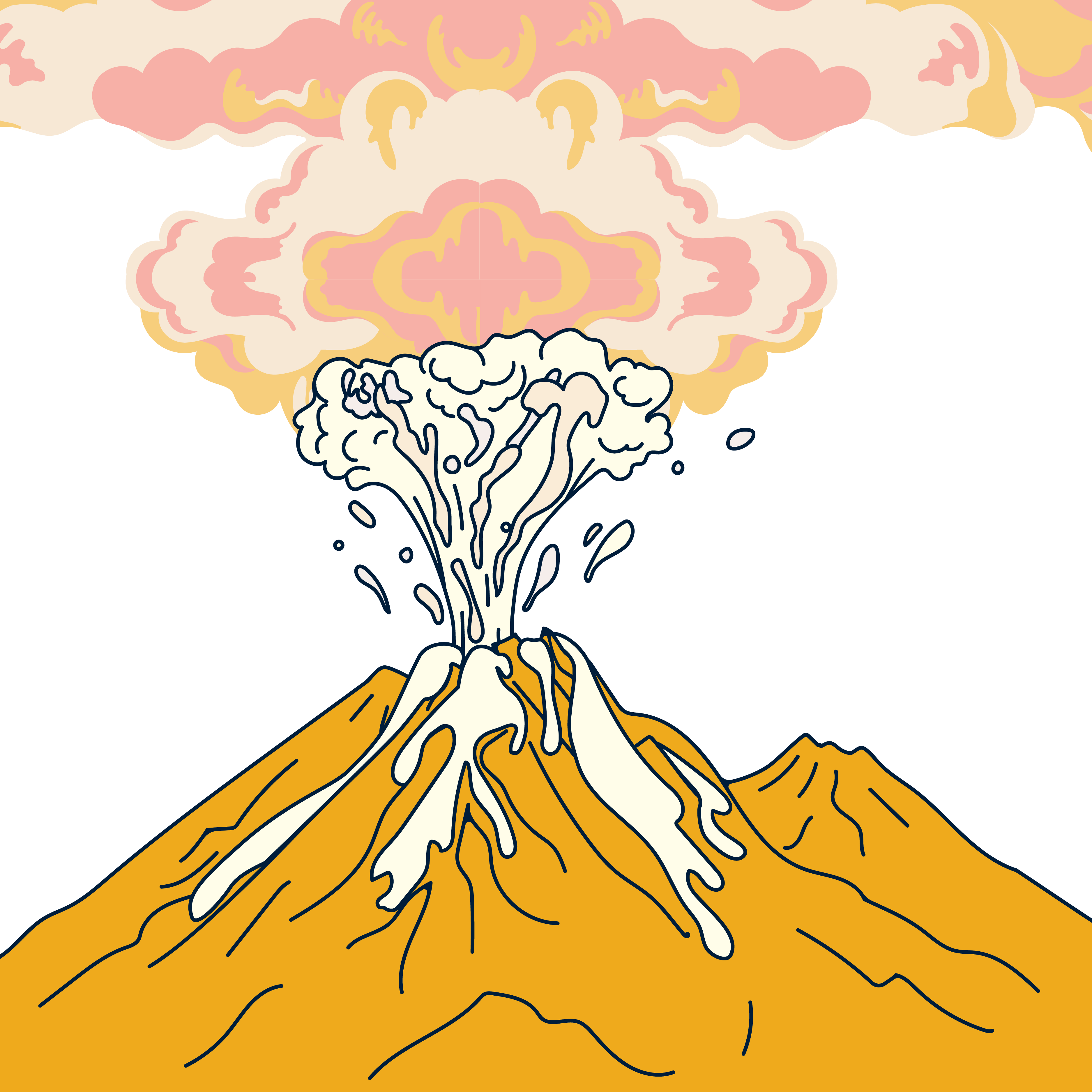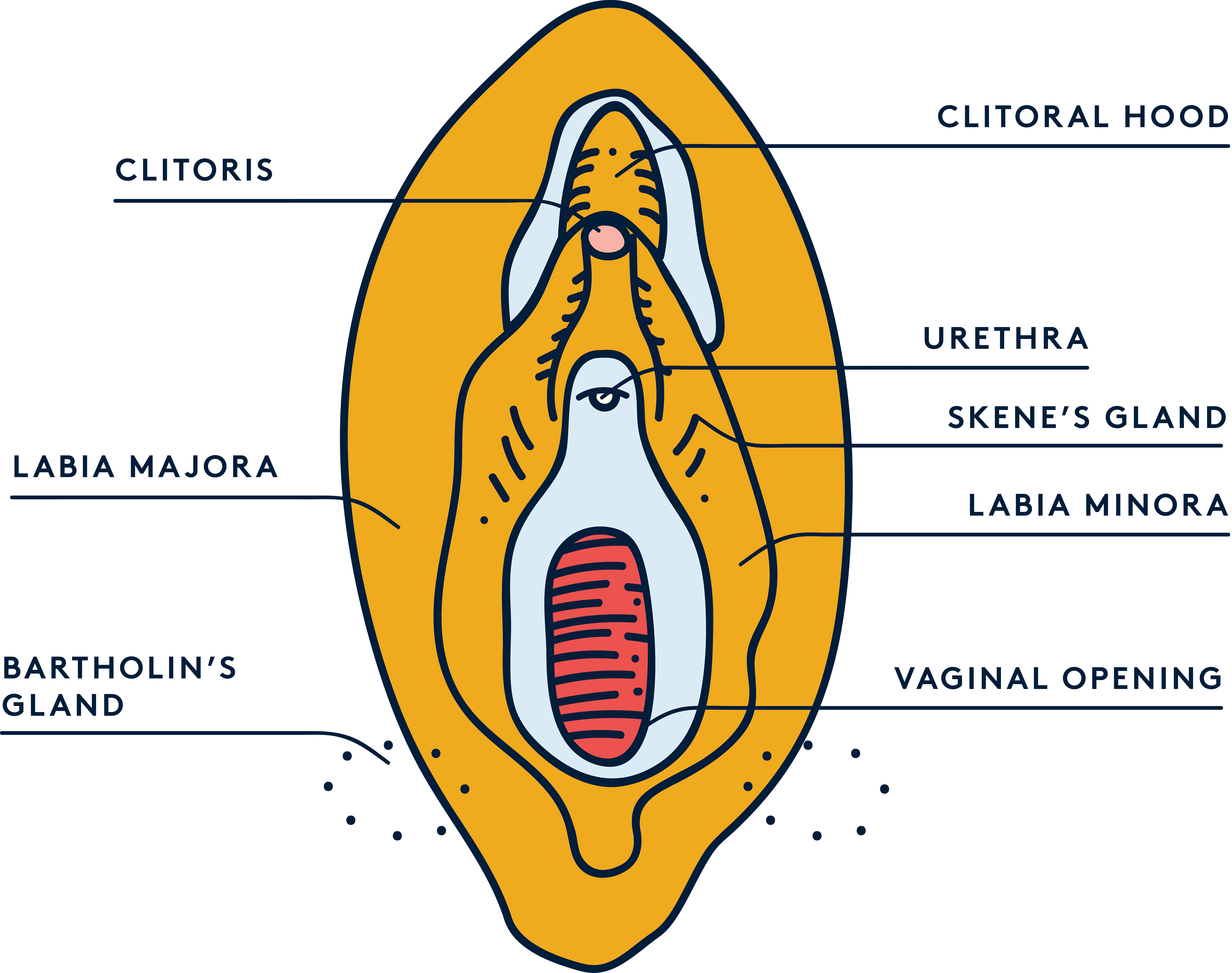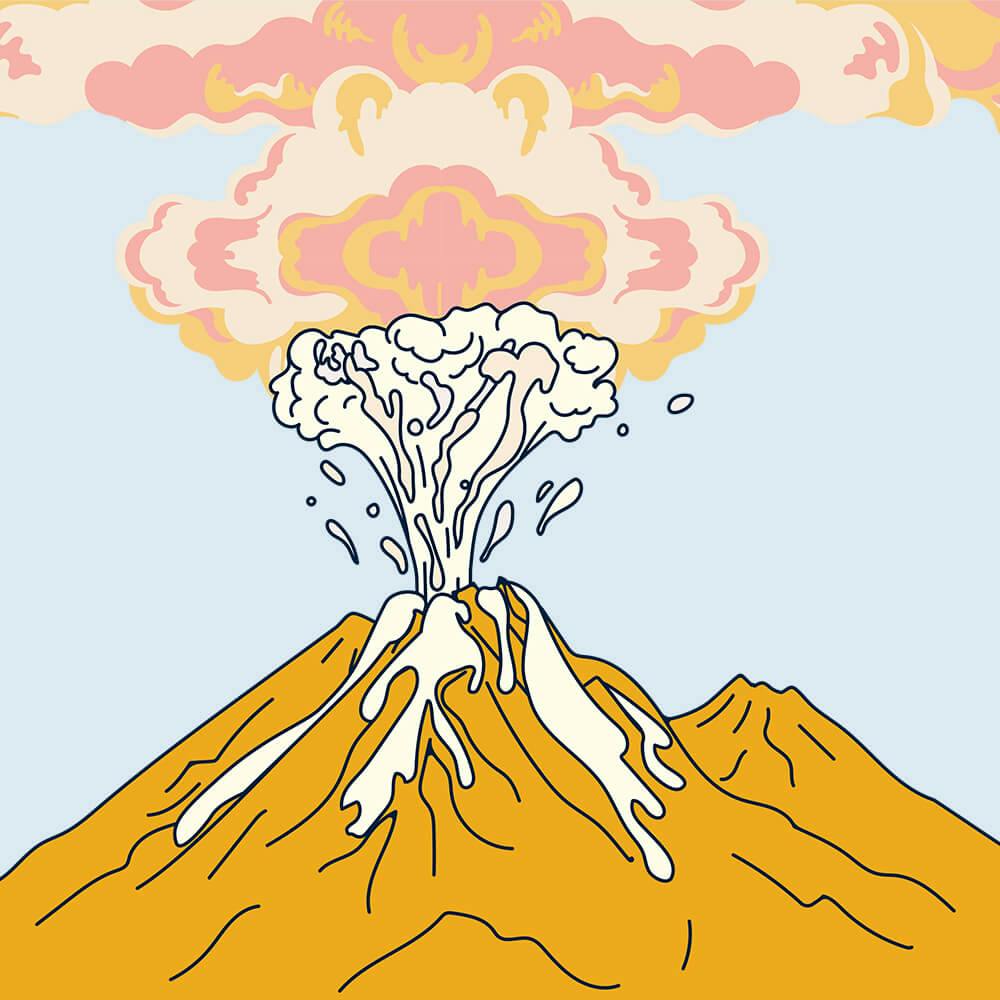Table of contents
Illustrated by Erin Rommel & Sabrina Bezerra
Squirting remains one of the most controversial and misunderstood aspects of female pleasure to date.
Although we’ve known about squirting for more than 2,000 years, the phenomenon of female ejaculation is still hotly debated.
We review the (admittedly limited) research on female ejaculation to address any and all misconceptions about squirting.
What is squirting?
“Squirting” is used to describe female ejaculation, when a person with a vulva emits liquid from the urethra in response to sexual stimulation or orgasm. The fluid released usually looks like water and is colourless and odourless.
Squirting is different to vaginal lubrication (being “wet”), which is produced by the Bartholin glands and secreted by your vaginal walls especially during arousal.
Can all women squirt?
The International Society for Sexual Medicine reports that 10% to 50% of women ejaculate, but that “most aren’t aware of it because the fluid often flows backward into the bladder instead of outside of the body.” Other research places that number closer to 69% (insert 69 joke here).
The amount of fluid ejaculated differs a lot from woman to woman, ranging from barely noticeable amounts to gushing, geyser-like streams. If you’ve ever seen squirting in porn, chances are you’re familiar with the latter.
All of this means there is big variability in how women describe and report their experience with ejaculation, making the data at hand a little inconclusive and open to interpretation.
Is squirting just pee?
Let��’s preface this question with a much needed disclaimer: the research on female ejaculation is woefully lacking.
The science is sparse at best, so the jury’s out on what exactly female ejaculate is composed of. We simply can’t confidently say that squirt fluid is “just urine”. Now, let’s unpack this misconception...

A healthy vagina = a great sex life. You can look after your vaginal microbiome with Daye's ProViotics, which help protect your vagina from infections like thrush and BV and keep your vaginal pH levels balanced.


For a long time, researchers thought that female ejaculate was just urine, a notion still held by many people. Some experts still claim that female ejaculate is mostly composed of urine, but we don't have sufficient studies to say for sure.
In 2015, a small study concluded that “squirting is essentially the involuntary emission of urine during sexual activity.” In this study, seven women peed before sex and then had their bladders scanned before and after squirting. The researchers noted that the women’s bladders filled before squirting, and then emptied right after. The study quickly made headlines and mainstream media was quick to misreport it by stating that squirting is just pee.
However, not only did the study only include seven women, it also found that five out of the seven women had prostate-specific antigens (PSAs) in their squirt. PSAs is an enzyme produced by the prostate gland in men and found in semen, but not usually associated with urine – which is made up of 95% water and trace amounts of urea, creatinine, and minerals like sodium and potassium.
Research published in Sexuality and Human Rights in 1997 showed that PSAs was absent from women's urine before sexual self‐stimulation, but present in both their urine and their ejaculate after sexual self‐stimulation. Meanwhile, other scientific analysis shows that urea and creatinine were only present in female ejaculate in very low levels.
So where does the PSAs in female ejaculate come from? Cis women and AFAB individuals also have prostate tissue, known as the Skene’s glands. Also known as the paraurethral glands, they’re located on the front wall of the vagina, and they drain fluid via ducts in the urethra. For this reason, some scientists believe that the Skene’s glands are involved in the mechanisms of squirting, and release a liquid that makes up female ejaculate.

It’s all a bit complicated, but for the time being, there is no consensus among sexual health professionals and researchers as to what squirt is or is not.
Squirting vs. female ejaculation
To make things even more complicated, some experts believe that “squirting” and “female ejaculation” are two different things, and the terms shouldn’t be used interchangeably.
Research suggests that squirting and female ejaculation are two different phenomena and don’t always happen at the same time.
According to some scientists, squirting is used to describe the emission of fluid that is clear and colourless, comes from the bladder, and with a similar make up to urine. Female ejaculation, on the other hand, is used to describe the release of milky-white fluid that contains PSAs and originates from the Skene’s glands.
Why do some women squirt?
Well... why not? All bodies are different, especially when reacting to sexual stimuli, but if it feels good, why question it!
The longer, more complex answer is: we don’t know. It’s still not clear if squirting serves any biological function aside from pleasure, but some research suggests that it may be your body’s way of preventing infections.
Some scientists theorise that ejaculatory fluid flushes out any bad bacteria that made its way up your urethra during intercourse, preventing UTIs. The jury’s still out on whether this theory holds up, though.
Why all the confusion?
The debate about squirting and female ejaculation is symptomatic of a culture that fails female bodies time and again. The lack of research and overall consensus goes to show how uncomfortable society is with female pleasure.

Reducing female ejaculate to just “diluted pee” without investigating oversimplifies a complex process of female pleasure, ultimately doing it a disservice. It also has serious ramifications.
In 2014 squirting was banned from pornography in the UK for being “obscene” because it was conflated with urolagnia (sexual pleasure from pee), essentially labelling depictions of female pleasure as indecent. The ban was also a clear form of fetish-shaming, which is a whole separate issue.
“At this point I really don’t care if someone thinks it’s pee, diluted pee or not pee. I’m tired of explaining and defending the way my body operates,” says Lola Jean, sex Educator and world record holder of volume squirting.
Women's sexuality has historically been shamed and marginalised. From masturbation to queefing, if it’s aligned with sexual pleasure, it’s been labelled abnormal at some point – and squirting is no exception. “It’s a visual equaliser of pleasure,” adds Lola Jean.
“Squirting is a physical manifestation of pleasure that can’t be easily faked (at least in person) so it has become this sexual trophy highly sought after. I think there’s also an obsession because it’s something that has nothing to do with penises. Someone can squirt without being penetrated, without an orgasm and this bodily phenomenon is not related to anyone except for the person doing the squirting. I think a lot of cis-men are having a hard time reconciling with that. Lastly squirting (much like all of sex related to vulvas) is highly under researched and underfunded.”
Ultimately more research on squirting and female ejaculation is needed (it deserves the attention), but the real work should go into normalising this perfectly healthy function and empowering women to feel comfortable in their bodies. Whether they squirt or not.
TL;DR
- “Squirting” is a colloquialism for female ejaculation, when a person with a vulva emits liquid from the urethra in response to sexual stimulation or orgasm (it's not the same thing as vaginal lubrication).
- It’s totally normal, and more common than you think. It’s believed that up to 69% of people with vulvas ejaculate.
- There is no consensus among sexual health professionals and researchers as to what squirt is or is not, but available research shows that squirt contains very low traces of urea and creatinine, and PSAs, an enzyme produced by the prostate gland in cis men and found in semen, but not urine. Cis women and AFAB people also have prostate tissue, known as the Skene's gland, which is involved in female ejaculation.
- Some research theorises that squirt and female ejaculate are two separate things. According to some scientists, squirting is the emission of fluid that is clear and colourless, comes from the bladder, and with a similar make up to urine. Female ejaculation, on the other hand, is used to describe the release of milky-white fluid that contains PSAs and originates from the Skene’s glands. They can happen at the same time, or independently from one another.
- We don’t know why some women squirt! It’s still not clear if squirting serves any biological function aside from pleasure… but if it feels good, why question it?






